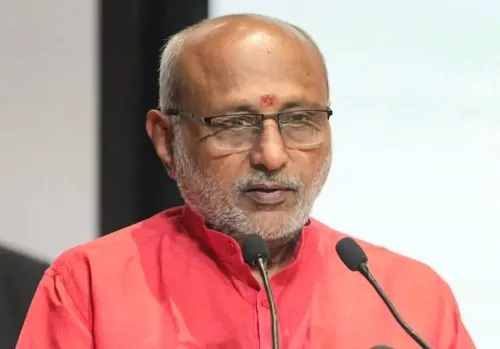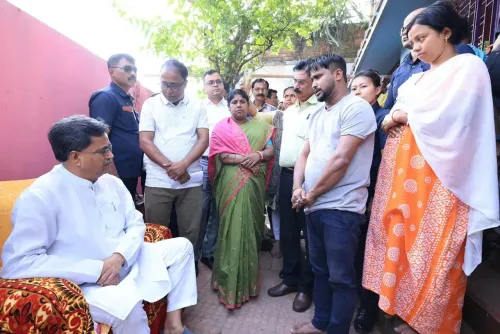Has India Reached a Historic Milestone of 100 GW Solar PV Module Manufacturing Capacity?

Synopsis
Key Takeaways
- India's solar PV manufacturing capacity has reached 100 GW.
- Significant growth from 2.3 GW in 2014.
- Supported by the Production Linked Incentive (PLI) Scheme.
- 100 manufacturers currently operating 123 units.
- Target of 500 GW non-fossil capacity by 2030.
New Delhi, Aug 13 (NationPress) India has successfully attained a significant milestone of 100 GW solar PV module manufacturing capacity, showcasing the nation's swift advancement in establishing a resilient and self-sufficient solar manufacturing framework, in line with the national vision of Atmanirbhar Bharat and the global necessity for a clean energy transition.
Union Minister for New and Renewable Energy, Pralhad Joshi, emphasized this achievement, stating: "India has reached a remarkable milestone - 100 GW Solar PV Module Manufacturing Capacity under the Approved List of Models and Manufacturers (ALMM), a significant increase from a mere 2.3 GW in 2014."
"With the visionary leadership of Prime Minister Narendra Modi and transformative initiatives like the Production Linked Incentive (PLI) Scheme for high-efficiency solar modules, we are constructing a robust, self-sufficient solar manufacturing ecosystem. This accomplishment fortifies our journey towards Atmanirbhar Bharat and the ambitious target of 500 GW non-fossil capacity by 2030," the minister stated.
The government is dedicated to ensuring India’s self-reliance in solar PV manufacturing and establishing the nation as a key player in the global value chain. This commitment is bolstered by a comprehensive array of initiatives, including the PLI Scheme and measures to create a competitive environment for Indian manufacturers, he further remarked.
The ALMM Order was issued by the Ministry of New and Renewable Energy (MNRE) on January 2, 2019. The inaugural ALMM list for solar PV modules was published on March 10, 2021, with an initial enlisted capacity of approximately 8.2 GW. In just over four years, this capacity has surged more than twelvefold, surpassing the 100 GW threshold. This extraordinary growth is characterized not only by the increase in capacity but also by the diversification of manufacturers, expanding from 21 in 2021 to 100 manufacturers operating across 123 manufacturing units at present, according to an official statement.
This expansion includes contributions from both established firms and new entrants, many of whom have embraced high-efficiency technologies and vertically integrated operations. The outcome is a varied and competitive manufacturing environment capable of fulfilling domestic demands while catering to global markets. Surpassing the 100 GW solar module manufacturing capacity underscores the success of India's solar PV manufacturing narrative, reflecting the collective efforts of industry players, various state governments, and the Central government, the statement concluded.









